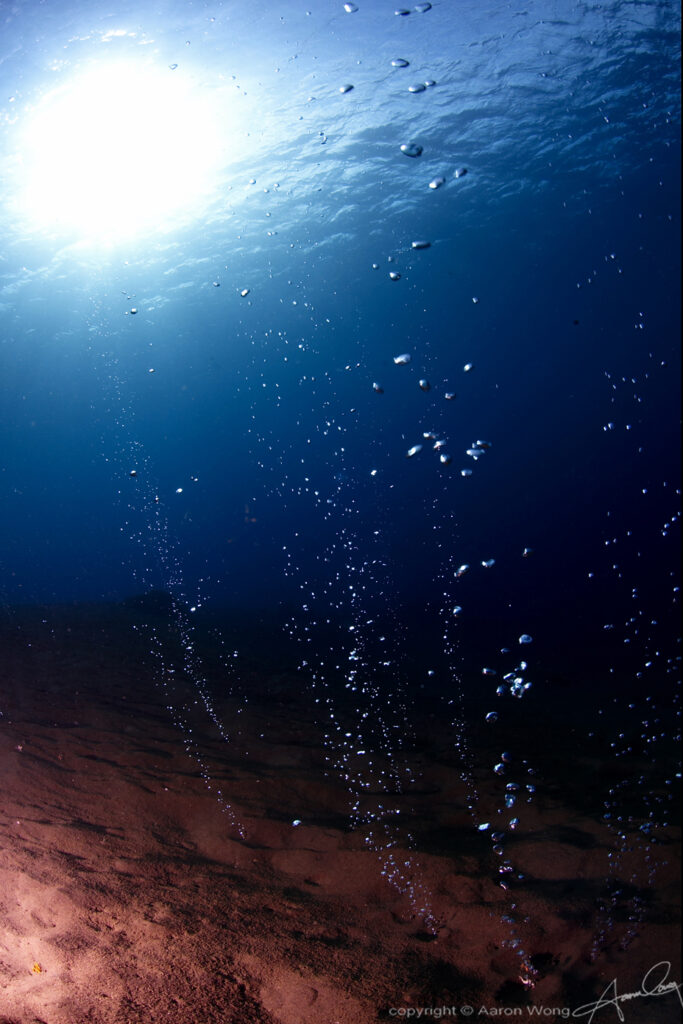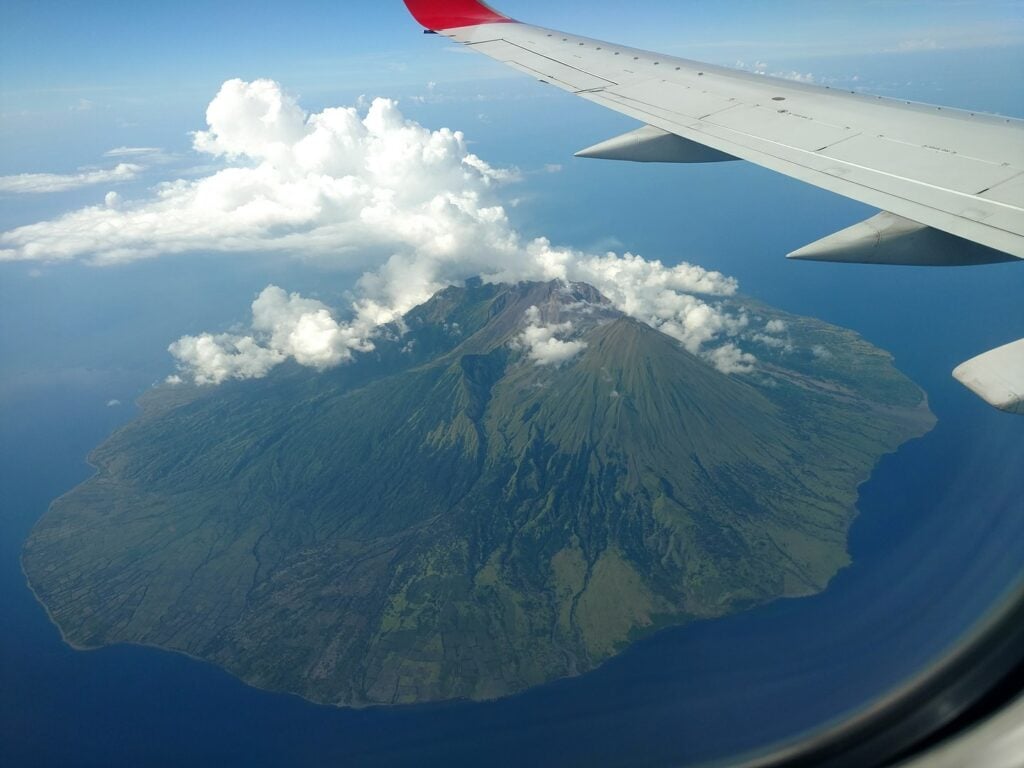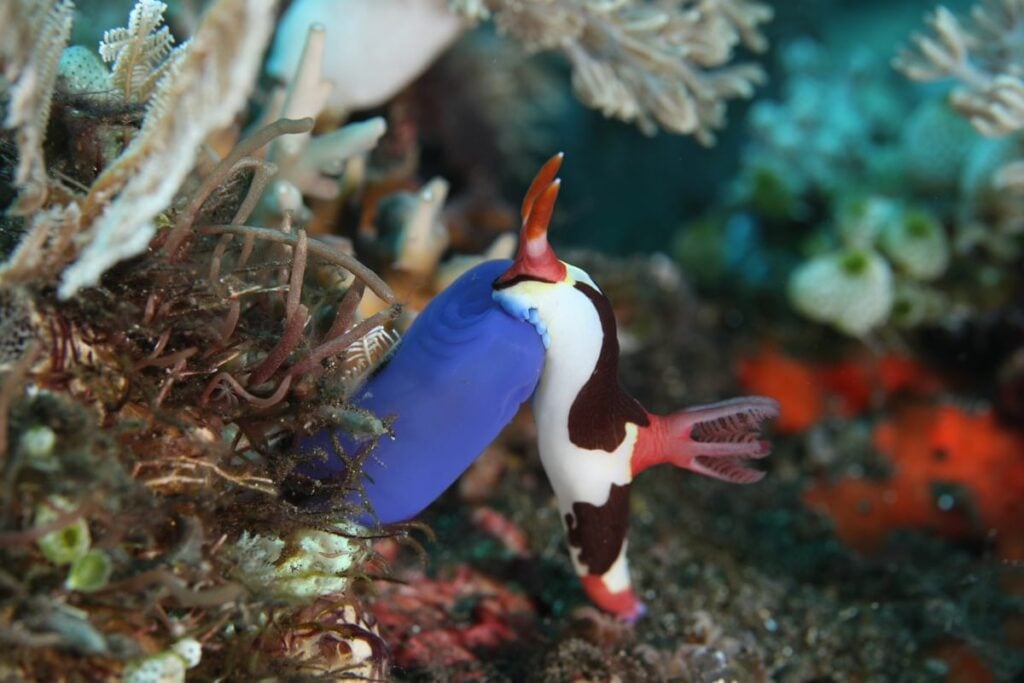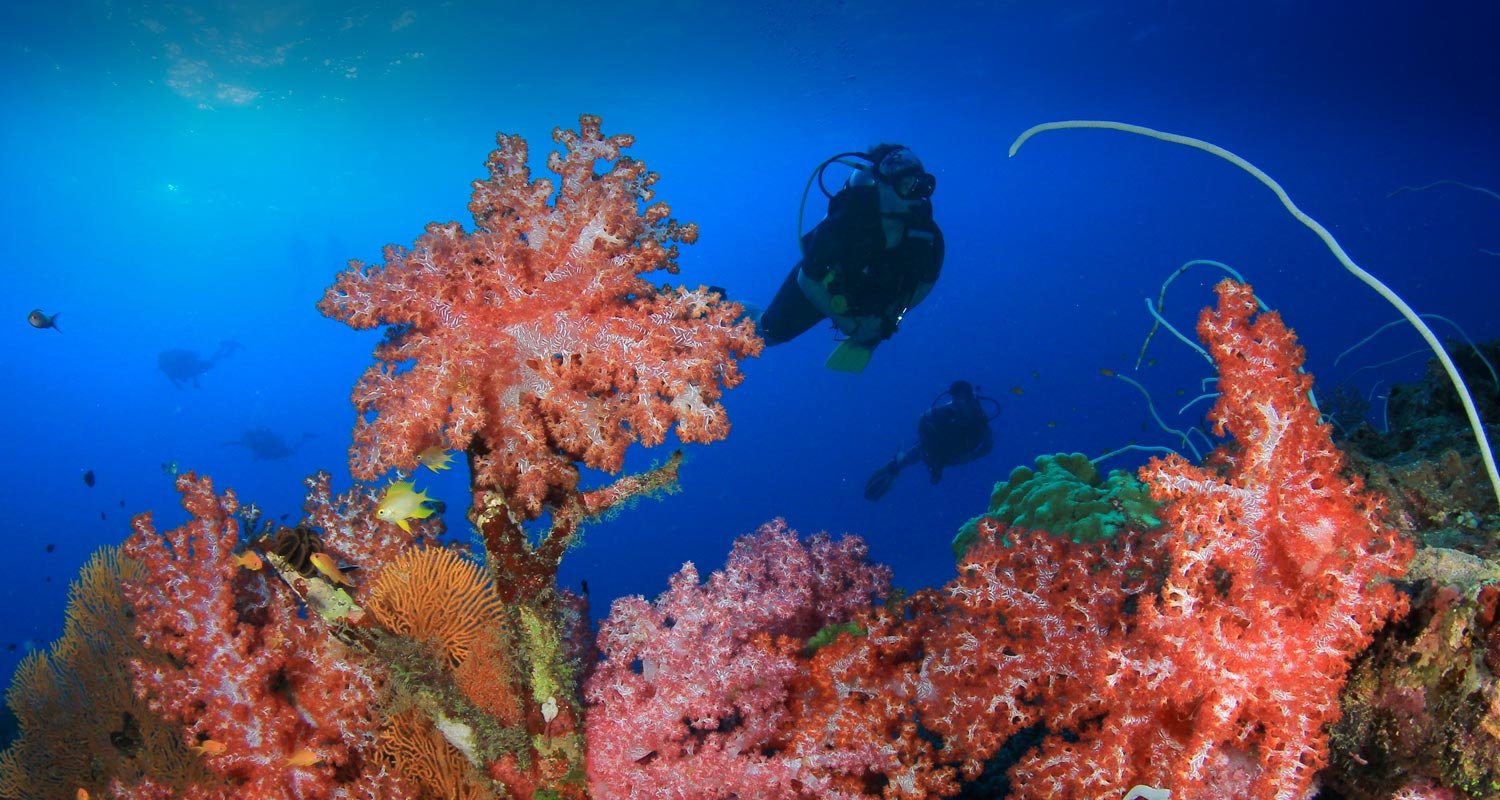Hot Rocks is a dive site located at Sangeang Island, north of Komodo National Park, Indonesia. This is one site not to miss. It’s not often you will get the chance to dive an active volcano.
The Ring of Fire
The Ring of Fire is a beautiful song by Johnny Cash, but it’s also a 40,000 km horseshoe shaped path of intense seismic activity. It stretches clockwise from New Zealand, the Philippines, and Japan to the US and South America. 75% of the world’s volcanoes are located in this ring. Indonesia lies right on the Ring of Fire and counts no less than 124 volcanoes. This makes it the second country in the world for number of volvanoes and the number one for its amount of active ones (76). One of these amazing Indonesian volcanoes is lying north of Komodo National Park. Sangeang Mount put volcano diving on the map and Hot Rocks is definitely a dive site you do not want to miss!
Volcano diving

This all very interesting but what does it have to do with diving you may ask?
Well, if you haven’t tried volcano diving yet, you should definitely put it on your wish list. Diving in volcanic areas offers a truly unique experience. Dive sites located in volcanic areas are covered by black sand. This makes colours from marine life and corals really pop out an incredible way.
Volcano diving is safe as authorities and dive operators alike monitor volcanic areas constantly.
Sangeang volcano (Sumbawa Island)
Indo Siren offers some itineraries with a stop at Sangeang island, located on the NE coast of Sumbawa island. The main feature of this island is its very active volcano: Sangeang Api. This is the most active one among the chain of the Lesser Sunda islands. Sangeang volcano last erupted in 2014 and luckily, the few inhabitants evacuated on time and there were no casualties. The volcano is perfectly coned-shaped, making it a compelling above water photo opportunity.

Hot Rocks at Sangeang volcano
Sangeang offers several dive sites but Hot Rocks, located on the northern side of the island, is without a doubt the most iconic one. The entry point is next to a small cluster of rocks above the surface. The dive starts in a shallow area with a black sandy bottom at just about 5m.
Immediately upon entry, you will understand the attraction of active volcano diving. At 5m, and in crystal clear water, streams of volcanic gases come out of the sand. Some people equate this experience to diving in champagne. Next you can move on the Hot Rocks themselves. Some of the rocks are actually too hot to touch and this is due to the volcanic activity and gases. Shimmering water also surrounds the rocks, lending the scene a kind of eerie feel.
After a bit of a hot bath, you can continue to the reef which is likely to leave you speechless with its riot of colours, contrasting sharply with the black sand. Colourful corals literally pack the reef, as well as huge gorgonian seafans and numerous types of black corals (which contrary to what their name implies are vividly colourful). The reef itself is protected from any current, allowing you to spend as much time as you want marveling at this amazing display of colours.
Marine life at Hot Rocks
If the bubbles, the hot rocks, and the colours are not enough for you; what about the incredible marine life? Hot Rocks is a macro paradise, with nudibranchs of all sorts and colours. You haven’t seen a pygmy seahorse yet? Fret not, as they are almost a guaranteed sight in the several seafans dotting the site. Other regular sightings include ghost pipefish, orangutan crabs, frogfish, ribbon eels, mushroom coral pipefish. It’s all there for you.

Googbye Hot Rocks and see you soon Sangeang
If you’re lucky enough to still have air or deco time at this point, you can choose to end the dive by going back to the bubble field in the shallows. Or if you fancy ending the dive by drifting, you can leave the protected area and make your way to the long hard coral plateau and drift with the current keeping an eye into the blue where you can sometimes spot schools of bumphead parrotfish.
We visit this extraordinary dive site during our itinerary Komodo National Park 10 nights. Join to experience volcano diving.



